Welcome to the Sierra de Aracena and Picos de Aroche Natural Park, declared as such in 1989. With its rolling hills and clusters of white villages, this area can be found at the western end of the Sierra Morena, the longest of Spain’s mountain ranges. With only 40,000 inhabitants scattered over its 3000 square kilometres, it makes for an ideal destination for walkers and nature lovers looking to get away from the hustle and bustle of modern life. The character of the villages has changed little over the centuries, their history reflected in their architecture and the landscape surrounding them. You pass along Roman cobbled tracks, glimpsing abandoned watermills and ancient hill forts left by the Moors. On your walks you can still see mules ploughing small allotments, hear the ringing of goat bells among the oaks and chestnuts, and the bubbling of the many streams and springs which abound in these hills. Water springing directly out of the rock or hillside, or from the numerous village taps is usually safe to drink, unless signed “no potable”. Turning your eyes to the skies you will see patrols of vultures and other birds of prey circling around, busy bee eaters and hoopoes flitting about, and if you’re lucky, a flash of blue kingfisher skimming the surface of a river. Whatever the season the Sierra has something to offer its visitors. Springtime brings an incredible profusion of colourful wildflowers: irises and orchids, peonies and gladioli. Summer is fiesta time, when the deserted village streets slumbering in the stifling heat suddenly spring to life as the gentle night breezes bring their welcome relief, and people spill out into the squares to sip ice cold beers. Colour returns to the countryside in autumn as the leaves of chestnuts and poplars, walnuts and figs, turn from green to gold, red, rust and brown. With the late autumn and winter rains the parched dusty earth takes a welcome drink, and within days the Sierra is lush and green again, enticing the visitor to venture out on a clear bright winter’s day. There is no heavy industry in the Sierra, the lack of which is most evident in the quality of the air – clear and fresh, with the fragrances of wild mountain thyme, rosemary and pine competing with each other. Many of the villages are dependent on the jamon industry, the curing factories mainly in and around the village of Jabugo, renowned throughout Spain for its quality hams. Herds of the black Iberian pig grazing among the groves of cork and Holm oak are a common sight, where in autumn they feast on the falling acorns. Other local produce include sweet chestnuts, walnuts, honey, goat’s cheese, and the much prized wild mushrooms, when in autumn you will see locals sneaking off into the woods, armed with a basket and a pocket knife. Where the best mushrooms grow is a highly guarded secret. When out exploring the Sierra you may follow many of our own marked routes as well as the Long Distance (GR) and Short Distance (PR) trails. Please remember to close all gates behind you, never light fires unless in a designated barbecue area, and finally, beware of the bulls! To download maps of the walks please click. It is only a short hour and a half’s drive to Seville, where you can rejoin the hustle and bustle of city life. Seville is a beautiful city and boasts some fine architecture and wonderful little bars, but we can guarantee that after a few hours you will be longing for the peace and tranquillity of the Sierra once again.Walking / Cycling in the Sierra de Aracena
Peter Ott, Alájar Autumn 2003
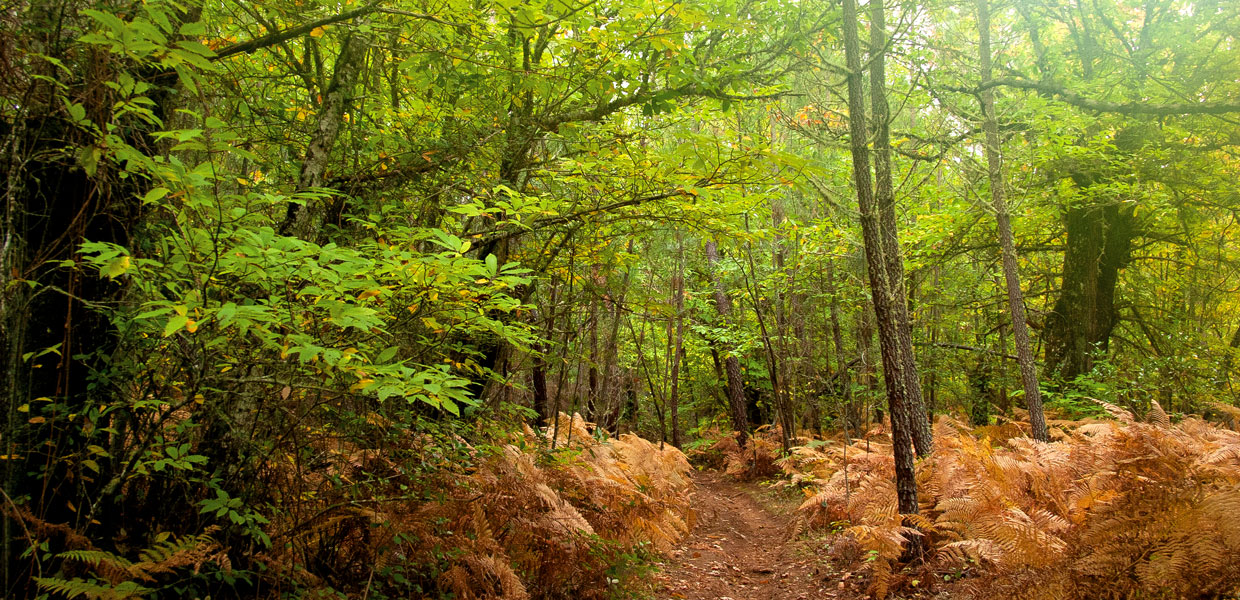
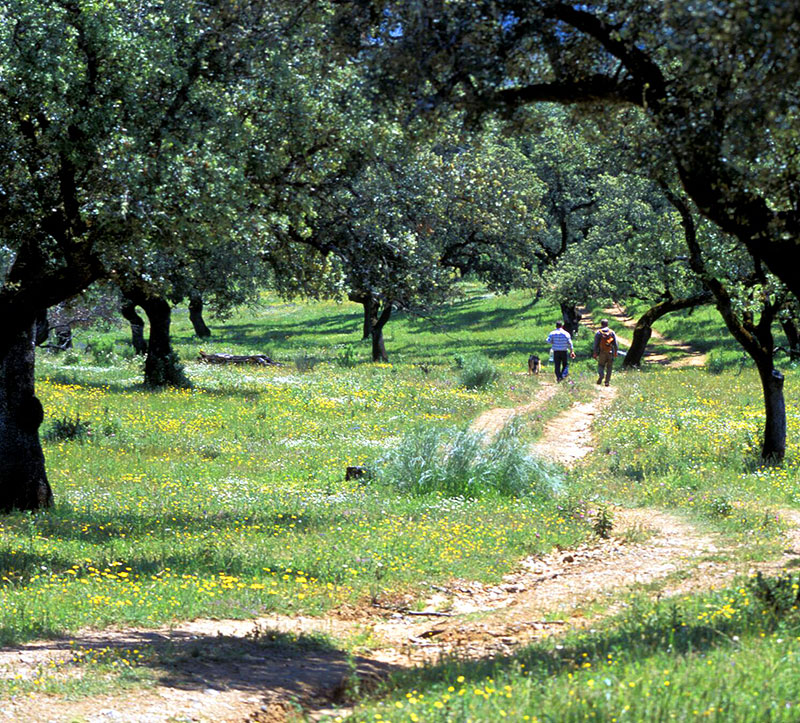
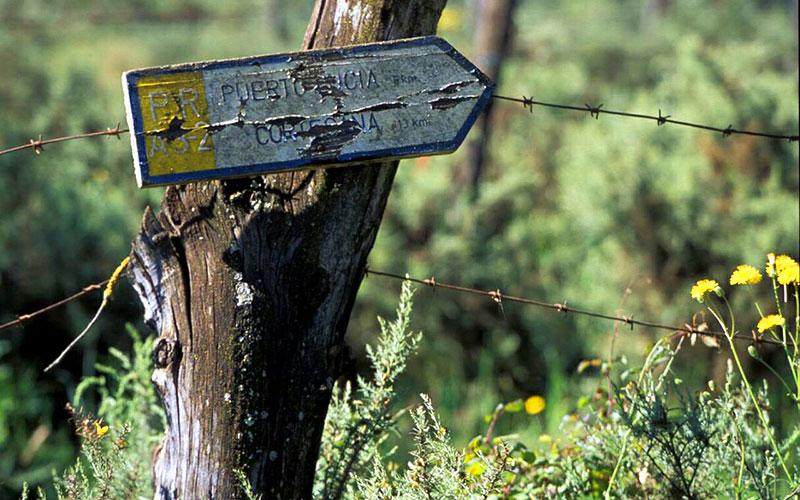
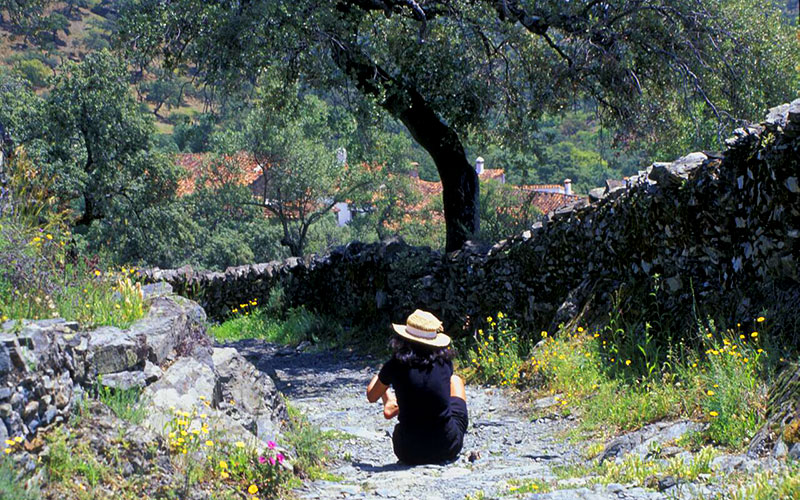
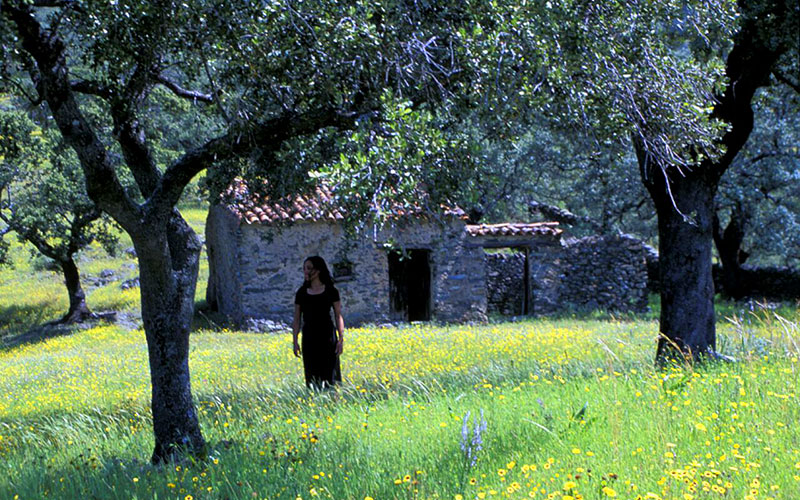

Walking & Cycling
Molino Río Alájar > Walking & Cycling

